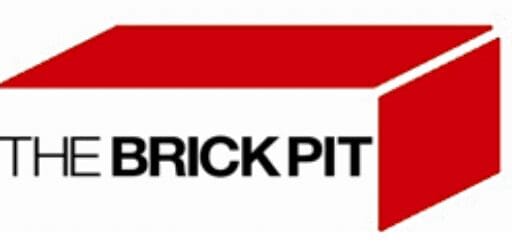Let’s be honest—recycled bricks have that je ne sais quoi new bricks just can’t match. The weathered charm, the history oozing from every crack, the Instagram-worthy rustic vibe… But here’s the kicker: not all old bricks are created equal. Sure, that pile of second-hand bricks you scored on Marketplace looks solid, but would you bet your patio (or your safety) on it? At The Brick Pit here in Australia, we’ve seen too many DIY disasters born from good intentions and untested materials. So, let’s geek out on the science of testing recycled bricks—because nobody wants their dream retaining wall to crumble faster than a biscuit in hot tea.
Why Bother Testing recycled bricks? (Spoiler: Your House Isn’t a Jenga Tower)
We get it—testing sounds about as fun as watching paint dry. But recycled bricks, whether they’re sandstock bricks from a 1900s Sydney factory or red bricks salvaged from a Perth cottage, have lived a life. They’ve endured decades of weather, weight, and maybe even a few questionable DIY jobs. Structural integrity isn’t just a buzzword; it’s the difference between a stunning brick edging and a pile of rubble.
Here’s the thing: old used bricks can hide flaws like:
- Cracks (even hairline ones that play hide-and-seek)
- Spalling (where the surface flakes off like a croissant)
- Water damage (thanks, Australia’s “subtle” climate swings)
- Weak spots from previous mortar residue or chemical exposure
And if you’re thinking, “But they’re cheaper!”—remember, replacing a collapsed retaining wall costs way more than a few quality checks upfront.
How Do You Test a Brick’s Mettle? (No, Karate Chops Don’t Count)
Testing recycled bricks isn’t rocket science, but it does require a mix of old-school intuition and modern know-how. At The Brick Pit, we swear by these methods:
1. The Eye Test: Channel Your Inner Sherlock
Grab a cuppa and inspect each brick. Look for:
- Cracks: Hold the brick up to sunlight. If light peeks through, it’s a hard pass.
- Efflorescence: Those white, powdery stains? They signal salt buildup, which weakens bricks over time.
- Uneven wear: Great for character, bad for load-bearing. Save the wonky ones for garden edging.
Pro tip: If a brick looks like it’s survived a zombie apocalypse, it probably shouldn’t hold up your pergola.
2. The Water Absorption Test: Because Sponges Belong in the Kitchen
Bricks are porous, but too much water absorption spells trouble—especially in soggy Brisbane winters. Here’s how we test:
- Weigh the brick dry.
- Submerge it in water for 24 hours.
- Weigh it again.
If the weight increases by more than 15%, that brick’s thirstier than a tourist in the Outback. Use it for decorative projects, not structural ones.
3. The Compression Test: Bring in the Big Guns
This one’s for the pros (we don’t recommend trying it at home unless you’ve got a hydraulic press lying around). Compression tests measure how much weight a brick can handle before cracking. Most reclaimed bricks should withstand at least 10–15 MPa.
FYI: At The Brick Pit, we run this test on every batch of paving bricks or retaining wall materials we sell. Sleep tight, knowing your project won’t faceplant.
Where Do Recycled Bricks Shine? (And Where to Run the Other Way)
Not all projects demand bricks tougher than a vegemite sandwich. Here’s our cheat sheet:
| Project Type | Ideal Bricks | Avoid Using |
|---|---|---|
| Retaining walls | High-compression reclaimed bricks | Bricks with cracks or spalling |
| Paving bricks | Dense, low-absorption red bricks | Lightweight or frost-damaged |
| Garden edging | Quirky, imperfect old used bricks | Anything structural |
| Feature walls | Sandstock bricks with patina | Bricks stained with chemicals |
Hot take: If your “structural” brick is crumbly enough to plant succulents in, maybe just… plant succulents in it.
“Where Can I Find Reliable Recycled Bricks Near Me?” (Glad You Asked)
Scoring quality second-hand bricks in Australia isn’t as simple as typing “reclaimed bricks near me” into Google. (Trust us, we’ve seen the shady listings.) Here’s our advice:
- Skip the randos: That guy selling bricks from his “uncle’s demolished shed” might be lovely, but can he guarantee compression ratings?
- Partner with pros: At The Brick Pit, we source, test, and certify every brick—whether you’re in Sydney, Perth, Brisbane, or beyond. Need brick disposal? We handle that too.
- Ask for proof: Reputable suppliers will share test results. No docs? No deal.
Bonus: Our team once rescued a batch of 1920s sandstock bricks from a Melbourne warehouse. They’re now the star of a heritage-listed pub’s restoration. Cue the happy tears.
3 Burning Questions About Recycled Bricks (Answered Without the Jargon)
Q: Can I test bricks myself?
A: Sort of. Visual checks and water tests are DIY-friendly. But for compression or chemical analysis, leave it to labs or legends like us.
Q: Are recycled bricks eco-friendly?
A: IMO, they’re the OG sustainable build material. Reusing bricks slashes landfill waste and carbon footprints. Just pair them with lime mortar for extra green points.
Q: Why do some bricks cost more than others?
A: Rarity, testing, and cleaning. A pristine 19th-century red brick? That’s the Chanel of masonry. Crumbling pavers? More like a $2 shop flip-flop.
Wrapping Up: Don’t Play Russian Roulette With Your Bricks
Recycled bricks are magical—when they’re tested, trusted, and paired with the right project. Whether you’re building a rustic retaining wall in Perth or hunting for vintage vibes in Brisbane, The Brick Pit has your back (and your bricks).
So, ready to ditch the guesswork? Give us a shout. We’ll hook you up with bricks that are as tough as a kangaroo’s tail and twice as charming. And hey, if your DIY skills end at Lego sets, no judgment—we’ve got pros on speed dial too.


